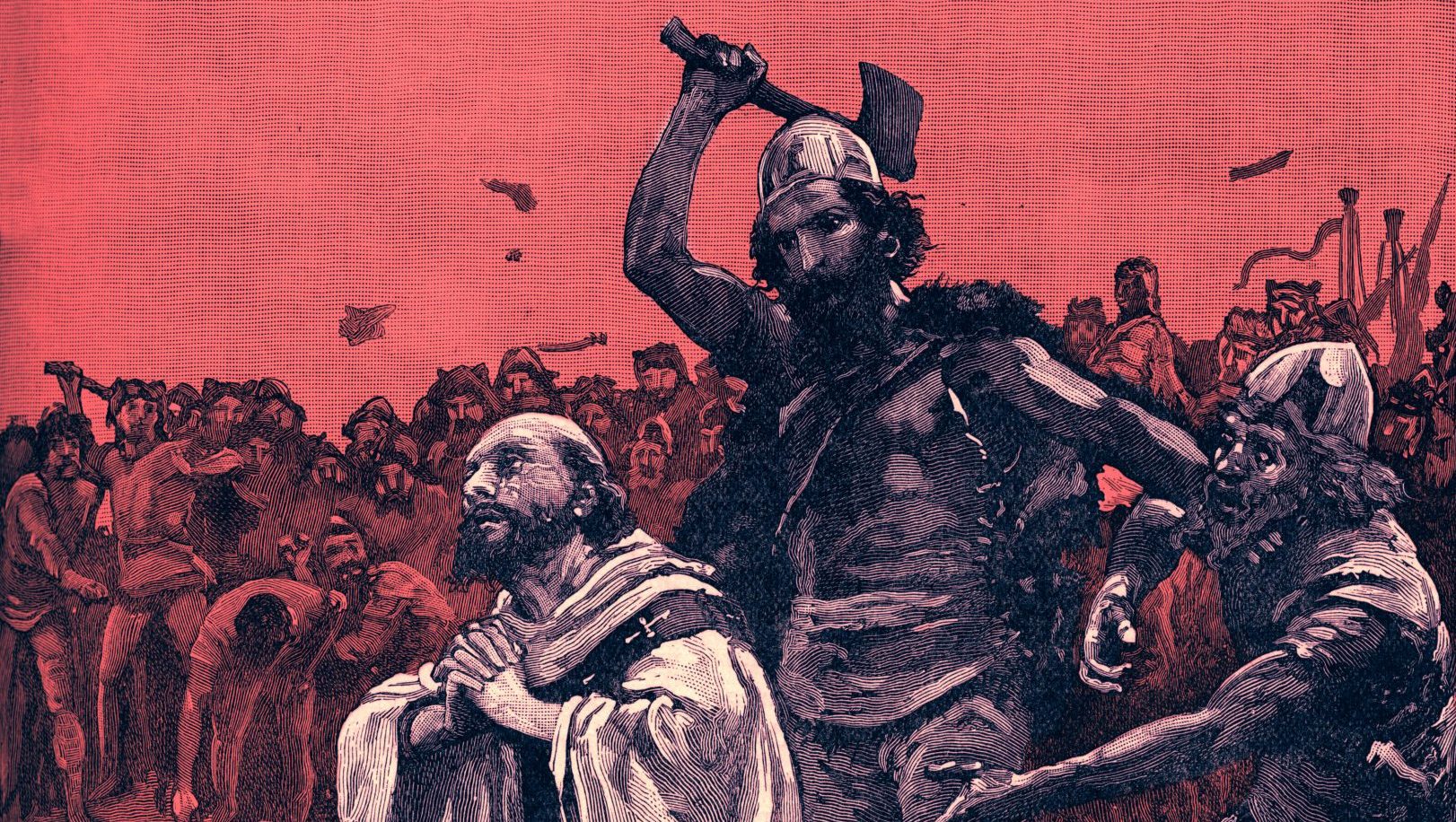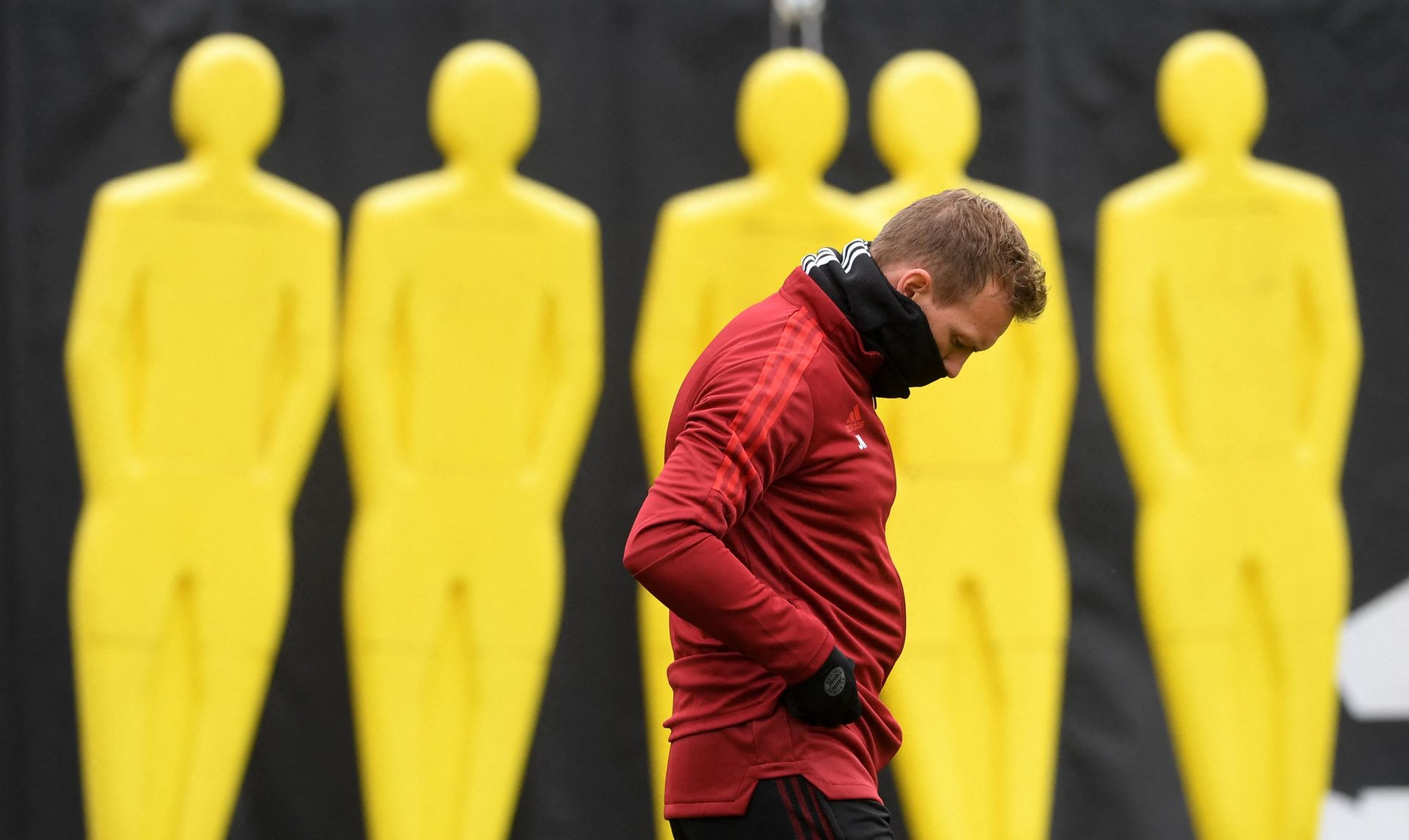At the heart of historic Greenwich, in south-east London, stands a church. The present structure, in Portland stone designed by Nicholas Hawksmoor, dates back to the early 18th century but a place of Christian worship has stood on this site for 1,000 years. That’s why the church sits at a different angle to its surrounding buildings: it was there first.
The church is dedicated to Ælfheah, St Alfege, Archbishop of Canterbury from 1006 until his grisly death in 1012, purportedly on this exact spot. St Alfege’s and its churchyard are peaceful places and it’s hard to imagine a martyrdom occurring there, on the one-way system, next to a bookie and opposite Pizza Express.
It’s also difficult to imagine how Ælfheah’s demise took place during a brutal foreign invasion, one that has been overlooked to the point of being written out of the history of these islands. The broad sweep of Britain’s historical narrative generally passes straight from the Romans to the Normans, missing out a huge chapter of several hundred years. Sometimes it even feels as if the story of this island begins in 1066.
It’s easy to think of the Vikings as a burly bunch of bearded lads with horns sticking out of their hats who would occasionally paddle across the North Sea, pillage a village then sail back to Scandinavia to get roaring drunk in a big hall. This would not be entirely accurate. For one thing, their helmets didn’t have horns.
For another, far from the occasional bit of peripatetic looting and burning, the Vikings were persistent harriers of eastern and southern England for centuries and occupied large portions of the country for long periods either side of the first millennium.
Ælfheah’s martyrdom, enshrined today a stone’s throw from the Thames, is part of a wider, underreported story. Ælfheah was the Archbishop of Canterbury when Viking invaders laid siege to the Kentish city in September 1011. He refused to admit the Norsemen and refused to capitulate: after three weeks an abbot took it upon himself to open one of the city gates, Canterbury fell and Ælfheah was taken prisoner and put into the cage where he remained for the rest of his life.
The Vikings knew that the Archbishop of Canterbury would fetch a huge ransom but Ælfheah refused to be ransomed. For seven months, including a harsh winter, the elderly cleric remained in his cage until the Vikings established a camp at what is now Greenwich, ahead of a planned assault on London.
One night, around Easter 1012, the arrival in the camp of a large consignment of wine led to a night of particularly enthusiastic boozing, at the height of which Ælfheah was brought from his cage and subjected to a range of humiliations and abuses until he was clubbed to death, an act so appalling that even now, a millennium on, a church marks the location.
Every year thousands of tourists file past St Alfege, barely giving it a second look. The same goes for locals. It’s a tangible reminder of the Viking presence in England yet the story is all but forgotten.
The story of the martyrdom of Ælfheah features in a new book, which may help to change all that. The Wolf Age: The Vikings, the Anglo-Saxons and the Battle for the North Sea Empire by Tore Skeie, translated by Alison McCullough, is the first major book on the Vikings by a Scandinavian author to be published in English. Focusing on a period of about 30 years after the turn of the first millennium, Skeie constructs a pacy, dramatic account of an extraordinary period in European history pieced together from scant documentary evidence extending not much further than the Anglo-Saxon Chronicle and a few Norse sagas.
In limiting his scope to a defined period, Skeie is able to produce a dramatic narrative that tells a wider story as well as bringing to life figures whose names might be familiar but whose key roles in our history have been overlooked. We’ve all heard of Æthelred the Unready and King Cnut; many of us will be familiar with the name Sweyn Forkbeard, but it’s a pretty safe wager that most of us wouldn’t know much about them beyond Cnut’s fabled attempt to turn back the tide by his royal command. Here, all three play key roles in Skeie’s narrative and the history of this country.
Æthelred became King of the English in 978 at a time when his nation had become prosperous largely due to the success of the wool industry. His ascension to the throne also coincided with a resumption of Viking raids after a few years’ hiatus, a conflict that would define his reign.
By the 990s the Vikings, under Danish king Sweyn Forkbeard, had become confident enough to start making serious incursions on to English territory. In the summer of 991 a fleet of at least 90 Viking warships appeared off the east coast. They landed at Folkestone and razed it to the ground before sailing north to torch Sandwich and Ipswich, provoking a response from Æthelred that culminated with a clash of armies at the Battle of Maldon. The Vikings ran riot, Æthelred was forced to pay a large tribute to dissuade the invaders from destroying more of the country, and the pattern was set for one of the most violent periods in English history.
Skeie’s account of the conflict between Æthelred and Sweyn rattles along, unpicking complicated political structures, rivalries, alliances and events with a light touch while never skimping on essential detail. It’s a sometimes bewildering swirl of alliances, battles, betrayals, tactical errors and missteps and frequent outbursts of intense and bloody violence (there’s even a bishop called Grimkil), but Skeie proves to be an expert, erudite guide through a knotty period.
Neither side emerges from The Wolf Age with much credit. By the turn of the millennium the Vikings’ maritime dominance meant they had effectively taken control of the Saxon wool trade as well as keeping up their increasingly audacious – and lucrative – raiding expeditions into eastern and southern England. In 1002 an exasperated Æthelred adopted a tactic that British leaders have turned to ever since: demonising foreigners.
He ordered that “all the Danish men who were in England”, by which he meant the Norse-descended population who had been living peacefully for many decades and who had no connection to the raiders from across the North Sea, should be killed. Skeie doesn’t shy in calling the events of November 13, 1002, what it was: ethnic cleansing. It’s not known just how many people were murdered during the St Brice’s Day massacre but mass graves are still being discovered, such as the 54 beheaded skeletons unearthed near Weymouth in 2009. Even the language surrounding the atrocity has chilling echoes with today’s discourse on immigrants: one account of a group of people being burned alive inside the church where they had sought refuge described the victims as “sprouting like cockle among wheat, [and so they] were to be destroyed by a most just extermination”.
Antagonising the Vikings was never a sound strategy and thus Æthelred’s murderous proclamation didn’t work. In 1006 Sweyn returned with a huge army of Vikings fired with an unprecedented level of ruthlessness, burning southern towns and villages as far as 50 miles inland and forcing Æthelred into embarrassing submission, handing over 12.5 tonnes of silver in tribute as well as food and supplies from an already famine-ravaged nation for Sweyn’s men riding out the winter camped in England.
Sweyn’s constant harrying finally paid off when he forced Æthelred into exile and became King of England at Christmas 1013. A month later he was dead. Æthelred died in 1016, two years after regaining his throne. He was succeeded by Sweyn’s youngest son Cnut, a shrewd politician who established an empire that eventually encompassed England, modern Denmark, Norway and Sweden and lands along the Baltic coast in what is now Poland and Germany.
Recent writing on the Vikings has sought to flesh out their reputation as merciless marauders by focusing on their cultural contribution to the medieval period, but while Skeie acknowledges their excellence in composing and performing poetry it’s their penchant for bloodshed that preoccupies this gripping account of a brutal era.
“Throughout all ages soldiers have freed themselves of responsibility by dehumanising their enemy by comparing him with animals,” he writes. “But the Norse warrior culture is among the few known examples of the opposite – of cultures that have dehumanised themselves; that have devoted themselves to the bestial side of their nature by making themselves into predators and their enemies into prey.”
The Wolf Age is a cool, detached account and one gets a sense that Skeie is holding back a little. As a historian, facts and clarity are what he deals in but there’s a really good writer in there too. He’s produced a properly absorbing page-turner here, a truly excellent book, but one feels if he allows his pen to run away with him his next could be even better.
The Wolf Age: The Vikings, the Anglo-Saxons and the Battle for the North Sea Empire by Tore Skeie, trans. Alison McCullough, is published by Pushkin Press, price £25




